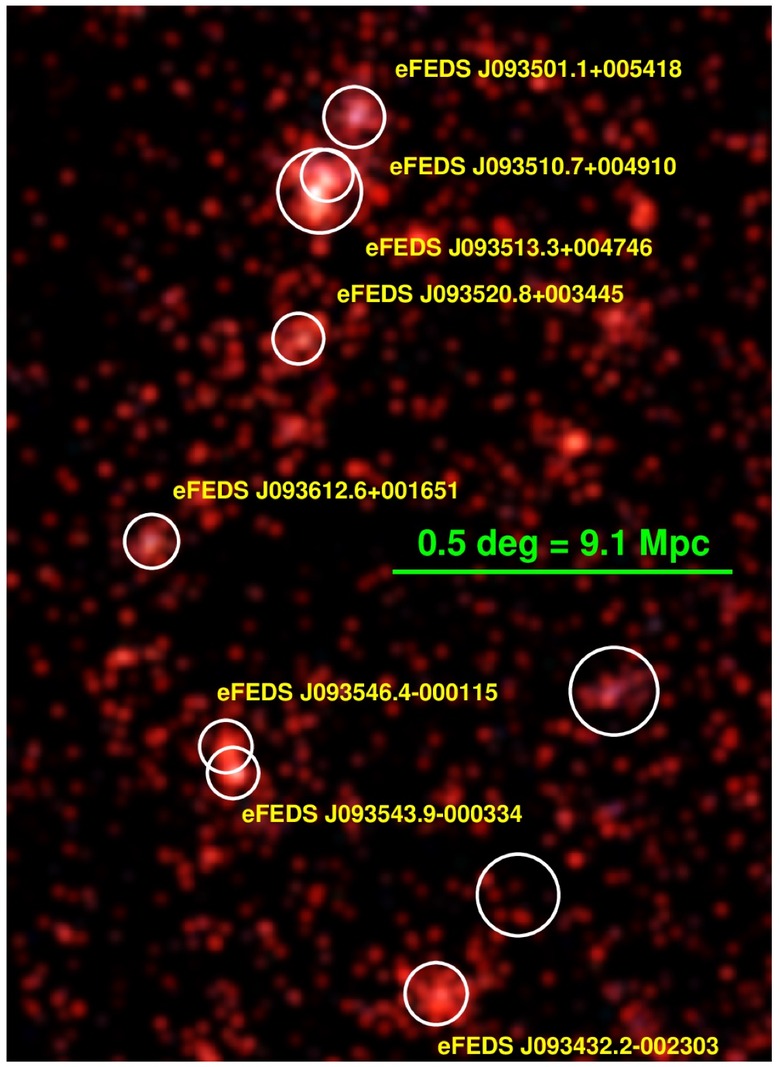New Supercluster Discovery Paves Way To Galactic Breakthrough
A new supercluster of galaxy clusters has been identified, potentially helping explain the fundaments of galactic development, and validating the eFEDS project's ability to give groundbreaking new insight into some of the largest known structures in the universe. Expanding as our universe spreads, superclusters are several orders of magnitude above our Milky Way, and can potentially span billions of light-years.
Indeed, the Milky Way is just one component in the Local Group galaxy group, that itself is a component of the Virgo Supercluster. That, in turn, is part of the Laniakea Supercluster, a collection of what's believed to be 100,000-150,000 galaxies gradually dispersing through the universe. Currently, it's estimated to stretch approximately 520 million light-years.
Scientists believe that there are around 10 million superclusters in the observable universe. Actually understanding them and their structure, however, can be tricky. Just as the relatively low-density bridges and filaments that conjoin their components allow them to spread, so they can be tough to detect with traditional instruments like X-ray telescopes.

New astronomical research led by Vittorio Ghirardini of the Max Planck Institute for Extraterrestrial Physics in Garching, Germany, however, not only identifies a previously-unknown supercluster, but helps validate a method for identifying the mysterious structures, PhysOrg reports. Using data from the eROSITA Final Equatorial Depth Survey (eFEDS) field, the pre-print paper describes a new supercluster made up of eight galaxy clusters.
eROSITA launched as part of the Russian-German "Spectrum-Roentgen-Gamma" (SRG) mission in mid-2019, later establishing a halo orbit around the second Lagrange point (L2). It's designed to gather an all-sky survey in the medium energy X-ray range, and help build a map of the galaxy clusters and groups – along with the hot gases in filaments between them – that make up our universe. It's also expected to help identify black holes that have previously been hidden from other instruments.
It began by undertaking what's known as performance verification, effectively sample maps of selected portions of the sky that contain the sort of depth data that the whole maps should accumulate over four years of standard readings. It's that early data which helped identify this new supercluster.
The team combined X-ray data from the eROSITA X-ray telescope, optical data from the Hyper Suprime-Cam, and finally radio data from the LOFAR and uGMRT. As a result, they found major merger activity in the northernmost clusters, along with possible evidence of further merging elsewhere.
It's not just an opportunity to better pinpoint our biggest galactic neighbors. "This work demonstrates the potential of SRG/eROSITA for not only mapping the large scale structure of the Universe," the paper concludes, "but also probing the detailed physical properties of their members." Simulations suggest more than 460 superclusters – each consisting of five or more members – could eventually be identified in just one portion of eROSITA's final data, allowing for much better understanding of how such structures impact the evolution of clusters of galaxies like the one we ourselves are part of.
